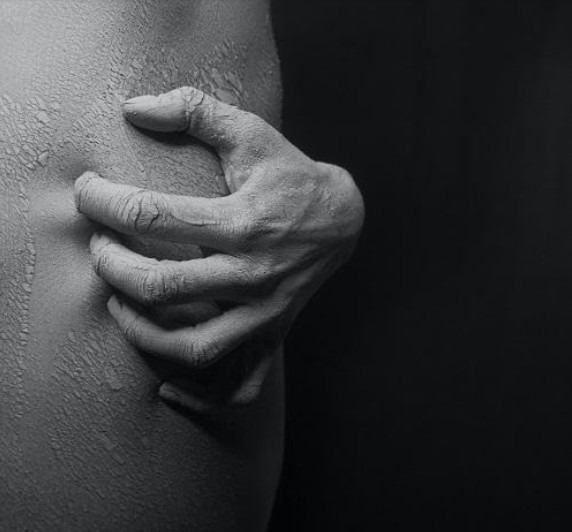Diabetes is a type of disease in which your body glucose or sugar level increases. Glucose mainly comes from the food you eat; when a person inhales high glucose food, his blood sugar level rises and is caused by diabetes.
Diabetes-Related Skin Issues
Diabetes affects your health in different ways. One main sign of diabetes appears on your skin.
Diabetes affects your skin in different ways, which are as follows.
- Bacterial infections
- Skin Itching
- Fungal Infections
- Allergic Reactions
- Acanthosis Nigricans (AN)
- Digital Sclerosis
- Vitiligo
- Necrobiosis Lipoidica
- Blisters
- Open Sores & Wounds
- Red Bumps
Bacterial Infections
Different kinds of bacterial infections that occur in people who have diabetes:
- Stye (infections of the glands of the eyelid)
- Boils
- Folliculitis (infects your hair follicles)
- Carbuncles (deeply infected your skin and disturbs skin tissues)
- Infections around the nails (the outer layer around your nails infected)
If you fail to cure all these kinds of bacterial infection then, must concern to a dermatologist.
Skin Itching
Diabetes also results in skin itching. It appears as a cause of yeast infection, dry skin, and poor blood circulation. When it is caused by poor blood circulation, it is probably the lowest part of the legs. To cure skin itching, use mild shampoos while taking a bath, use moisturizer or lotions on your skin and avoid hot showers.
Fungal Infections
The yeast of fungal infections of people with diabetes is often Candida albicans. Fungal Infections create itches or rashes of moisture on your skin. Fungal infected areas are around nails, in the corners of the mouth, and between toes and fingers. If you feel symptoms of fungal infections, then, must concern your doctor. If you want to get rid of infections and itching problems then you can use cbd for acne.
Allergic Reactions
Allergic reactions mainly occur due to two main reasons:
- Due to food and bug bites
- Due to medicine such as insulin or diabetes pills
Allergic reactions cause rashes, depression, and bumps on your skin. If you feel a medicine reaction after taking your medicine, then quickly go to your doctor.
Acanthosis Nigricans (AN)
It must be possible that you see brown stains or tan on your skin, and you tried to scrub it, but that is the wrong way. People with diabetes commonly face this issue. It appears on:
- Around your neck
- Around Elbows
- The armpits
- Around knees
- The groin
Acanthosis Nigricans usually attack people who are fat and overweight. So, the best way to cure Acanthosis Nigricans is to lose weight first.
Digital Sclerosis
People who have diabetes sometimes see the symptoms like tight, thick, and waxy skin around their hands and fingers’ backside. Digital Sclerosis is considered type one diabetes. To cure this type must control your glucose level under control.
Vitiligo
Vitiligo is a diabetic condition in which skin coloration is affected. The cells that make pigment are cells that control skin color; these cells are destroyed and result in dull-colored skin patches.
It also affects your elbows, knees, and hands; its circumstances also appear around the mouth, nostrils, and eyes. If you feel these symptoms on your skin or face, take a proper checkup from a dermatologist.
Blisters
Blisters are a rare cause of diabetes. For people who have diabetes, blisters suddenly appear on your skin. It might be a group of small blisters or single blisters. It looks like a severe skin issue. It usually appears on the hands, feet, legs, and arms. It is also called diabetic bullae. If you see these kinds of symptoms on your skin, you must visit your doctor to cure them.
Necrobiosis Lipoidica
Necrobiosis Lipoidica is another problem that appears in the results of diabetes.
Necrobiosis Lipoidica causes spots similar to diabetic dermopathy, but they are lesser, more significant, and profound.
It is caused by changes in the blood vessels and generally affects the lower legs. The skin affected with Necrobiosis Lipoidica becomes the yellow, raised, and often bluish-purple border. It also results in open sores. If you face all these issues, then you must concern your doctor.
Red Bumps
This skin condition is associated with diabetes and also with Granuloma Annulare. This skin condition causes bumps and patches that may be skin-colored, red, pink, or bluish purple.
Firstly, it is clear that if people suffer from granuloma annulare, it is not apparent that they also have diabetes. But keep in mind if you have granuloma annulare, then you must check your tests for diabetes. For its cure must go to your doctor to know if you have bumps like those described above, especially if the bumps come and go.
Open Sores and Wounds
Those people who suffer from high blood sugar for an extended period can lead to poor circulation and nerve damage. People would feel all these symptoms if they had poorly controlled diabetes for an extended period. Nerve damage and low circulations make it difficult for your body to heal wounds. To cure this kind of diabetes, takes proper control of your diabetes.
Conclusion
From all the above symptoms of diabetes-related skin issues, we conclude that keep your diabetes adequately managed. If you have symptoms, then take a proper checkup from the doctor. And properly follow the doctor’s instructions.


